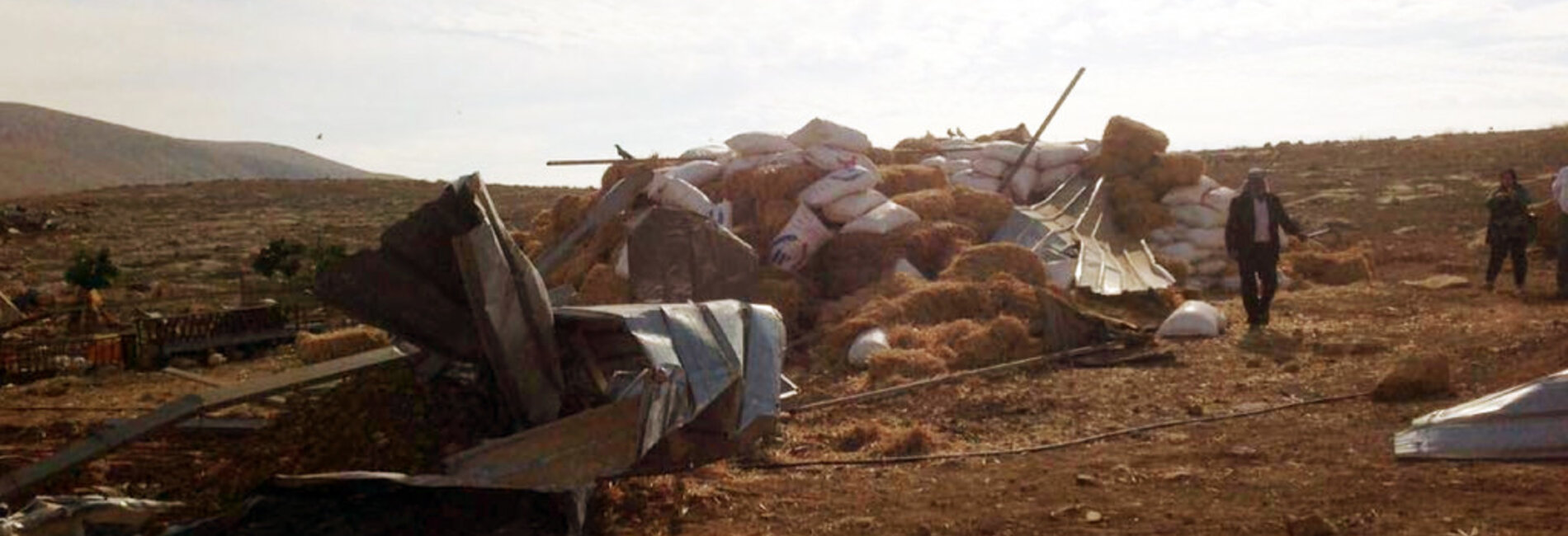Monthly Overview: December 2015
Attacks and clashes must not be treated as “the new normal”
By the end of 2015, 136 Palestinian deaths and nearly 14,000 injuries had been recorded in the West Bank and Israel in the context of attacks and clashes, the largest yearly figure since OCHA began its records in 2005. Figures for Israeli casualties resulting from Palestinian attacks were also some of the highest since 2008 (24 deaths and 350 injuries). The bulk of the casualties were recorded in the last quarter of the year, in a wave of violence characterized by almost daily stabbing and ramming attacks by non-affiliated Palestinians, and widespread protests and clashes. The targeting of Israeli civilians and the excessive use of force by Israeli military and police have remained major concerns throughout this period.
In the context of the continuing unrest, during December the Israeli authorities intensified restrictions on Palestinian movement throughout the West Bank. The Hebron governorate has been particularly affected: people moving between the main urban centers in the area, including to and from Hebron city, are forced to take long detours and cross checkpoints, where inspections and searches by Israeli soldiers are carried out, impacting access to services and livelihoods.
Recently, the Israeli authorities released for burial the bodies of a number of Palestinian perpetrators or alleged perpetrators of attacks, which it has withheld, some for over two months, triggering protests and clashes demanding their return; eleven bodies (all residents of East Jerusalem) were still withheld as of 6 January. The Israeli authorities also continued the renewed policy of punitive demolitions of the family homes of Palestinian attackers, citing the need for deterrence: two demolitions in December displaced an additional 37 people.
During November and December, Israeli measures targeting vulnerable Palestinian herding communities in Area C also intensified, including the destruction or confiscation of property, issuance of demolition orders, and the temporary eviction of residents during military training exercises. In his December briefing to the Security Council, the Assistant-Secretary-General for Political Affairs, Miroslav Jenca, referred to one of these incidents in the northern Jordan Valley (Al Hadidiya) as “troubling - all the more so as the relief provided to these households has been repeatedly seized by the Israeli security forces despite the onset of winter.”
Mr. Jenca also cautioned against treating the current upsurge in violence as “the new normal: Israelis and Palestinians should not be resigned to living under the threat of violence. However, a comprehensive strategy to limit that threat cannot rely uniquely on enhanced security measures. It must also address the primary elements motivating Palestinian anger.”
In contrast to the West Bank, the 24 fatalities recorded in Gaza in 2015 was the second lowest figure recorded since the outbreak of the second intifada in 2000, indicating that the 2014 ceasefire has largely held. There was also some progress recorded in 2015 in the exit of goods from Gaza to Israel and the West Bank; the volume of goods marketed outside Gaza increased more than five-fold compared with 2014. The unemployment rate in Gaza also improved slightly in the third quarter of 2015, dropping five percentage points from the figure recorded in the equivalent quarter of 2014. However, unemployment in Gaza remains one of the highest figures in the world at 42.7 per cent, and commercial exports and transfers still constitute only 10 per cent of the volume recorded in 2007, prior to the imposition of the blockade.
The 2016 Humanitarian Response Plan (HRP), part of the Global Humanitarian Overview launched in Geneva in December, has been completed by the humanitarian community in the OPT. The HRP for the OPT requests US$571 million for a range of interventions from legal assistance and the safe disposal of unexploded ordnance in Gaza, to the provision of basic services such as water and health. The appeal is 19 per cent lower than that of 2015, in the wake of the 2014 hostilities in Gaza, but at least 65 per cent of project requirements in the 2016 appeal are intended for Gaza.










